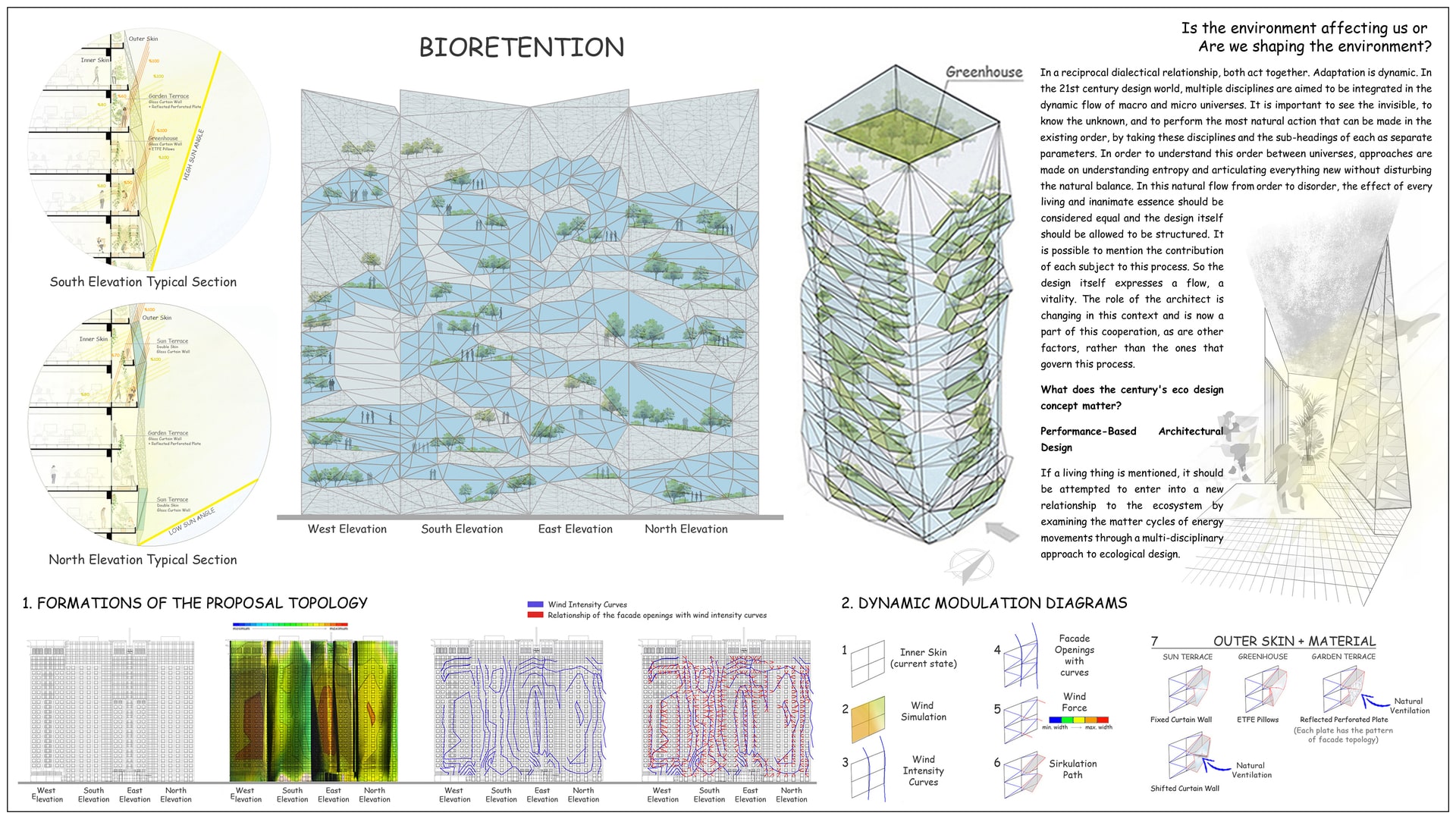Project Description
The Natural Evolution of Architecture ‘Everything flows and nothing stays the same.’ HERACLITUS In a reciprocal dialectical relationship, both act together. Adaptation is dynamic. In the 21st century design world, multiple disciplines are aimed to be integrated in the dynamic flow of macro and micro universes. It is important to see the invisible, to know the unknown, and to perform the most natural action that can be made in the existing order, by taking these disciplines and the sub-headings of each as separate parameters. In order to understand this order between universes, approaches are made on understanding entropy and articulating everything new without disturbing the natural balance. In this natural flow from order to disorder, the effect of every living and inanimate essence should be considered equal and the design itself should be allowed to be structured. It is possible to mention the contribution of each subject to this process. So the design itself expresses a flow, a vitality. The role of the architect is changing in this context and is now a part of this cooperation, as are other factors, rather than the ones that govern this process. What does the century's eco design concept matter? Performance-Based Architectural Design If a living thing is mentioned, it should be attempted to enter into a new relationship to the ecosystem by examining the matter cycles of energy movements through a multi-disciplinary approach to ecological design. The form follows the stream. In this context, the knowledge of the great world is intended to be used for ground-specific building by taking into account eco design discourses such as re-Naturalizing, Biomimesis, Arborescense, re-Acclimatizing, Accumulating, Reflecting, Re-Programming, Discontinuity and self-Sufficiency. And, by selecting a skyscraper located in the city center of Istanbul / Turkey, its relationship with the sun and wind was simulated in terms of performance. The data obtained from the simulation were examined together with the environmental data. Areas that caused loss of performance were attempted to be improved in collaboration with natural light and wind. The point here is to ensure that building systematics can produce a self-contained symbiotic life. In this context, new prosthetics were added on the chosen building, feeding the building systematics without changing the main program, just as in symbiotic life styles. The evolution of the building's topology was witnessed in the framework of increased in formation by bringing different sources of information closer together with the environment alanalyses carried out. As a result, it was aimed that the system, together with the topological facade, could be constructed in a continuous flow of environmental data and internal data. And by making this information visible in a geometric sense, it became clear how to approach the new responsive design operation that would occur. By simulating the resulting new design, its performance was observed to increase significantly.
